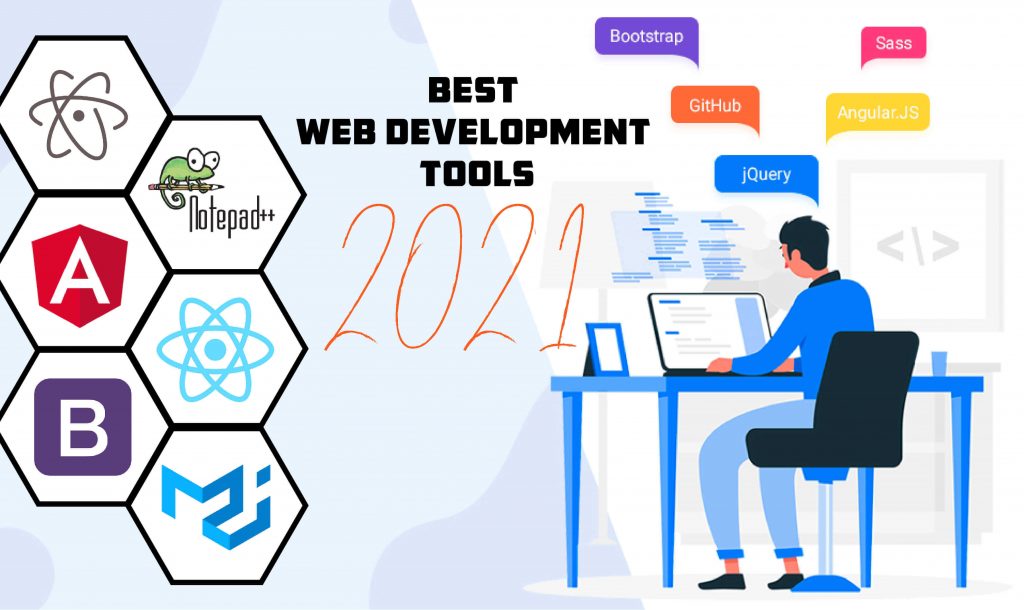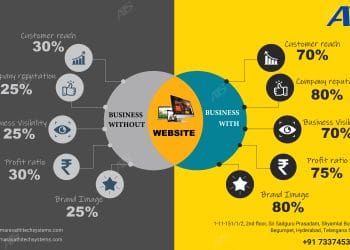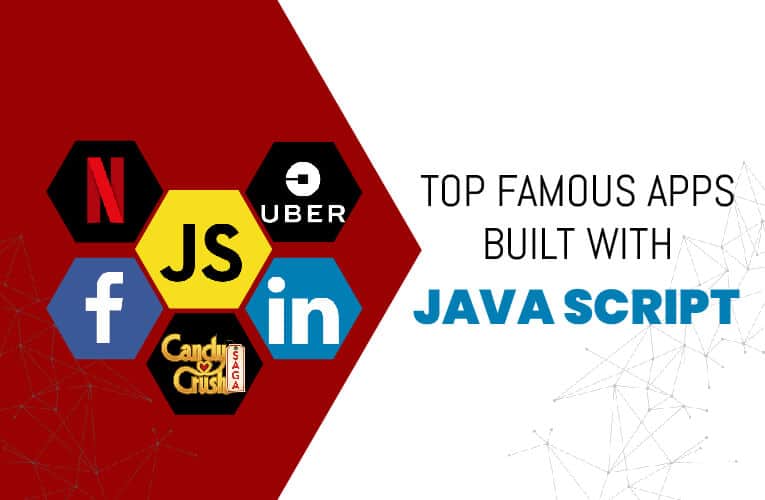Every year, the level of progress in the web creation room is accelerating. It seems unlikely to create such effective and productive browser apps as we are capable of in 2021, like Netflix, Facebook, Spotify or AirBnB, five or ten years ago.
If the demands of browser applications begin to become more complex, to keep up with rising requirements, web developers urgently require stronger and more flexible resources. Thankfully, with both existing enterprises and community members racing to create better libraries, platforms and applications to make it simpler for developers, we have never been more spoilt for options.
Much when the standards of software developers have changed, so has a developer’s own job description. Developers are forced to break out of their silos and become “jacks of all trades” at a growing rate, continuously shifting background at work and interacting within cross-functional product teams. Keeping this in mind, without the right architecture, prototyping and teamwork methods to support their technical work, the current developer’s toolbox is incomplete.
We will review the most used and valued web development software as of 2021 in this piece.
Code & Text Editors
Without programming and text editors, web developers wouldn’t be able to do their work easily and effectively. Once they pick an editor they want the best, for several years and often even decades, tech professionals prefer to stick to it.
- Atom
Atom is a comparatively young kid on the code editor’s list. It was created and published by GitHub in 2014 and has been described as “a 21st Century hackable text editor.” Atom is very simple and has a smooth workflow. However, the freedom to tailor the workspace to specific needs and desires is the game-changing aspect, and comes with a large range of extensions.
- Sublime Text
Among the most common text code editors out there is The Sublime. While you can download Sublime for free, you are not legally asked to pay $70 for a licence until you finish the evaluation. Sublime is cross-platform (Windows, MacOS, Linux), has quick navigation, command adaptation, simultaneous editing, and a Python-based plugin API.
- Notepad++
Notepad++ is a versatile text editor that is open source that only runs on Windows. It supports 27 programming languages, standard sentences, coordinated editing and display assistance, highlighting and folding syntax, and has several other useful features.
- Vim
Vim is a simple text editor to customise, allowing any form of text to be produced and updated easily. For most UNIX systems and with Apple OS X, it comes built-in as ‘vi’.
- Visual Code Studio
Visual Studio Code is a Microsoft-designed source code editor that runs on the Windows, Linux and MacOS platforms. Debugging, intelligent code completion, snippets, integrated Git control and GitHub, syntax highlighting, and code refactoring are noteworthy features of the VCS.
Web Application Frameworks
Software libraries built to help you create online applications, web tools, and web APIs are Web Application Frameworks. It is incredibly important to use the best structure for your project, and as the product gets more mature and complicated, it could become very time-consuming and costly to move to a new framework.
Below are only a handful of today’s most common web frameworks – front and backend alike. Be sure to do your own homework before settling on each, and look at all the possible alternatives.
- Django
Django is a Python high-level platform supporting accelerated development and well-organized, pragmatic architecture of applications. One of the most stable web frameworks out there is considered to be Django, since it is one of the quickest to respond to new vulnerabilities.
The ecosystem of Django is part of the larger community of Python which actively offers a whole lot of helpful packages and utilities. If you want to try it, just type “Django” on PyPI, and you’ll find over 4,000 ready-to-use kits.
- Ruby On Rails
In JavaScript, Python or Java, Ruby On Rails is frequently listed, but if you dig further, you can soon discover that it is not an individual coding language at all, but a web application written on top of the Ruby programming language.
Rails is especially known for being simple to manage and opening up several possibilities for cooperation with developers. It is a product of the two main concepts on which Rails was built:
- “Convention Over Configuration”: That ensures that by default, the world in which Ruby On Rails developers function assumes the logical circumstances. Such a theory limits the number of options that must be taken by the programmer and decreases the overall difficulty.
- “Don’t Repeat Yourself”: This theory is described in the Logical Programmer’s book as follows: “Each piece of knowledge must have a single, unambiguous, authoritative representation within a system.” In fact, this means that repetition is a waste and can be avoided through abstraction.
Ruby On Rails is very friendly for beginners and has an active and supporting community behind it.
- Angular
Angular is a very popular Google-created and maintained Javascript application. Angular is cross-platform and enables online, tablet, native mobile, and native desktop applications to be installed. It was initially published as AngularJS, but was totally rewritten in 2016 (which created a lot of controversy) and is now officially referred to as Angular v2+.
- ReactJS
React is currently the most common development platform for Javascript right now. Facebook is actively developed and maintained, and was an early supporter of the development of component-based UIs. The other big reason React is very popular is because of React Native, which helps you to build Android and iOS Native UI apps using the same application code style.
- Vue.js
Vue is the newest kid on the front-end javascript frameworks block, which strives to provide a cohesive, more “battery-included” web application creation approach than other common libraries such as React and Angular 2.
- MeteorJS
Meteor is a free and open source isomorphic JavaScript web framework written using NodeJS (which operates on both the client and server sides). Thanks to an optimised JavaScript stack which extends from the database to the end user’s screen, Meteor is considered one of the best frameworks for rapid prototyping. If you build for the laptop, mobile, iOS or Android, you can still use the same code.
Although it has been claimed that in recent years, Meteor has lost some of its popularity, it remains one of the most popular and loved web creation systems out there.
- ASP.NET
ASP.NET is a server-side open-source platform built by Microsoft to create mobile applications using .NET and C#. The system has evolved rapidly since its introduction in 2002, and has never lost its wide prominence.
Front-End Frameworks
“Packages containing pre-written, structured code are often called “CSS frameworks,” front-end frameworks. When creating new websites, they are here to help you hit the ground running.
Hundreds of CSS systems with their own strengths and disadvantages are out there. Make sure you study the complexities while finding the best structure for your project. Using a complex structure for a basic project does not make sense, but a too-simple framework for a massive website could not be scalable.
- Bootstrap
One of the most popular open-source CSS systems is Bootstrap. I was developed and initially released in 2011 by Twitter developers. Bootstrap contains HTML, CSS and JavaScript elements and makes it easy to build responsive websites of all sizes and complexities. It is also quite open to those who are just starting the creation of the internet.
- Semantic-UI
Semantic UI is a component structure for website themes. It is focused on the premise that not individual HTML tags, but individual interface elements such as keys, modals or dropdowns are at the heart of pages.
- Foundation
The Foundation started as an internal style guide for CSS produced by the design firm ZURB. If you’re looking for a scalable and efficient system that wouldn’t in any way limit you, Foundation is a strong option.
- Materialize
Materialize is a front-end application focused on the visual vocabulary of Material Design. It’s quick, audacious, deliberate and has a low learning curve. The samples of websites designed with Materialize can be reviewed.
- Material UI
Material UI, also influenced by Google’s Material Design, is among the most common front-end frameworks in the world. It’s open-source and ReactJS-based. It is easy to use the Content Design modules in the site or smartphone apps with the components in the Material UI.
Package Managers
In order to simplify the task of installing, upgrading, configuring, and deleting computer programmes, web developers use package managers. When the user uses the specific package manager to order a package, it detects the requested package from a known source, downloads it and then instals it, notifying it of the required external actions.
- Yarn
Created by Facebook, Yarn is one of the newest package managers out there. It is loved by the group for being superior to the speed, efficiency and security of most other package managers.
- NPM
For the JavaScript runtime environment NodeJS, NPM is the default package manager. NPM’s success was strongly impacted by the introduction of Yarn, but it began to come back with the release of NPM 5 halfway through 2017, which resolved much of the original deficiencies.
Git Clients
For different operating systems, there are a range of available Git Interface clients. Before opting for the one that fits well for you and your squad, it’s good to check out a couple.
- Github Desktop
Created by GitHub, it’s a tool that lets you communicate from the desktop with GitHub. It has a rich interface that allows code without a command window to be handled. GitHub Desktop 2.0 also now supports rebasing and stashing for the new update, two of the most requested features that the original version missed.
- GitKraken
For Mac, Windows and Linux, it’s a cross-platform Git client. GitKraken has an elegant UI, built-in code editor, monitoring assignments, and connects with all libraries that are possible.
- SourceTree
SourceTree is a free, Atlassian-developed Git client available for Mac and Windows. It’s great for newbies to Git and also has all the sophisticated functionality to please customers at the pro level.
- GitCola
It’s another Git graphical user interface that is free and very powerful and written in Python. It’s less successful than other consumers, but it still has behind it a small and involved group.
- SmartGit
SmartGit is another Git client that is cross-platform (Windows, Mac, Linux). It has all the functionality that a web developer can need, and is very adaptable to user needs and workflows. You’d have to buy a licence to use it, unlike certain other users.
API & Testing Cloud Tools
Web APIs are a critical part of the work of web developers nowadays. It’s crucial to have reliable tools to effectively and safely construct, test and communicate with the APIs.
- Postman
Postman is an API development sharing platform, actively used by over 8 million developers and leading businesses worldwide. The features of Postman aim to automate each phase of API development and streamline the collaboration. Behind the tool, there is a very active culture, running daily offline and online activities.
- REST-Assured
It’s a test and evaluation platform for Java REST services. The ease of using dynamic languages is introduced into the Java realm by REST Assured.
- LambdaTest
Cross browser verification is the method for validating the rendering of a website through various browsers. Per version of the browser & browser has a special rendering engine that is responsible for your users viewing your website. This is why the same HTML, CSS & JavaScript code will always be used to appear differently from one browser to another.
Before you transfer it to the staging area where your QAs can jump in, you are responsible for unit testing your code as a developer. And after you force the code updates, you can make sure your web application remains cross-browser compliant. Especially, if any fallbacks are applied. It may be difficult to monitor over thousands or even hundreds of browsers + OS combinations, though. This is precisely where it turns out that LambdaTest is an important method to help you do cloud cross-browser checking. It also helps you via a cloud-based Selenium Grid to perform both manual & Selenium test automation.
In every web development project, cross-browser testing is essential with any release period, and LambdaTest means that you do so without any hassle of keeping an expensive in-house device laboratories or laggy virtual machines installed. That way, as soon as you can deliver them, you are able to verify the code improvements.
Web Design & Prototyping Tools
It’s not enough to just code web pages or applications anymore. You ought to invest a great deal of time into the UI and UX if you expect people to really use them. As a consequence, their production departments are doubling and tripling the number of digital firms.
- Figma
Figma is currently the leading software for UI architecture in the world. It has gained attention primarily because of its teamwork capabilities, enabling several individuals to work concurrently on the same text.
Figma also has good prototyping and hand-off capabilities that remove the need for several resources to switch between.
- ProtoPie
An advanced image prototyping platform is ProtoPie. Without wasting time writing code, it will integrate right into the workflows of designers and developers trying to easily prototype how something is meant to work (such as an e-commerce website).
- Framer
For those designers and developers looking to build advanced high-fidelity designs made of the actual UI React materials, Framer is a perfect pick. It is a great bridge tool between the design and construction teams, allowing them to communicate in the shared space and experiment easily.
- Toolset
Toolset is a page creator that helps users to easily and without code, create custom elements for websites.
For web developers and web designers who want to easily complete complicated tasks that include a variety of custom features, including custom post styles, custom search, front-end forms, and much more, it is a fantastic choice. You should only add the Toolset for your custom programming needs instead of adding several resources.
Its new creation, Toolset Blocks, ensures that you can build interactive content websites in just minutes without coding.
- Animator By Haiku
With Animator, for smartphones and websites, you can create high-fidelity timeline animations. First, you visually build the animations or use a code editor, and then you can export them to other platforms.
- Affinity Designer
For any web developer, a solid vector graphics tool is a must-have. Though Adobe Illustrator is still a classic option, there are other fantastic tools available, one of which is Affinity Artist. Basically, it has all the same tools as AI, but it comes with a lifetime licence and is thus more affordable.
- Mockplus
For prototyping, teamwork, and concept systems, Mockplus is a versatile all-in-one product platform. With components, icons, and interactions, you can rapidly transform concepts into practical prototypes. Put designers, product managers, and front-end designers together to work better. Mockplus allows you to create a quicker and simpler design experience.
Collaboration Tools
We will discuss the instruments that web developers use to communicate with their colleagues in the final portion. In space, coordination and communications skills are becoming increasingly necessary, as the progress of whole projects often depends on clear and productive communication, not on technological excellence.
- Asana
Asana is one of the most commonly used methods out there for project management. It is known for being fast and visual and is also a perfect choice for cross-functional teams.
- Basecamp
Basecamp is another famous project management platform that is loved by the software community. It is very well-suited for day-to-day activities, but reporting is somewhat less sophisticated than Asana or JIRA.
- JIRA
For millions of developers, JIRA is a go-to project management tool. It has all the most innovative features to schedule, track and report on agile project progress. A huge benefit of JIRA over the other software for project management is that it is so flexible, but the same thing is also a downside, leading to a steeper learning curve and further attempts to set it up.
- Slack
If you really don’t know about Slack and have never used it, you have to live under a rock. Slack is a wireless team messaging tool that is supercharged with all the potential integrations and nifty features that make it easy to communicate remotely.
- Zoom
Often, texts are simply not enough. The strength of face-to-face contact can be replaced by nothing. Zoom is a perfect solution for video conferencing, making it convenient for personal and team calls to be held. It has a restricted free rate that allows you to make calls for up to 40 minutes.
Summary
The Web creation environment is rapidly evolving. Modern developers have different apps in their tool-boxes, and to remain effective, it is necessary to constantly stay tuned with all the latest news in the industry.












